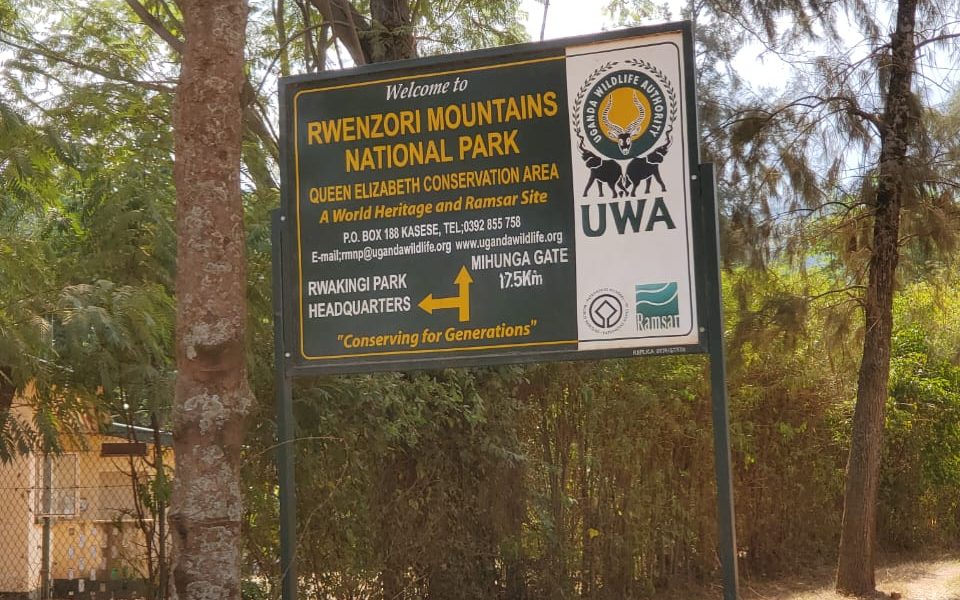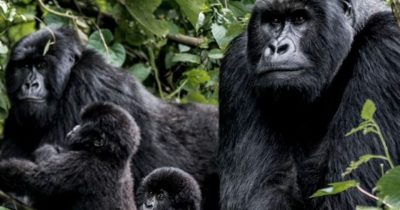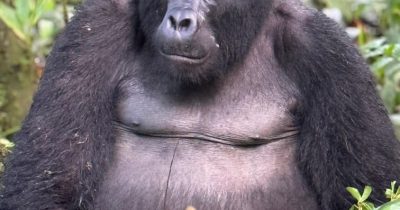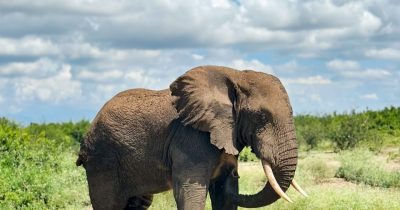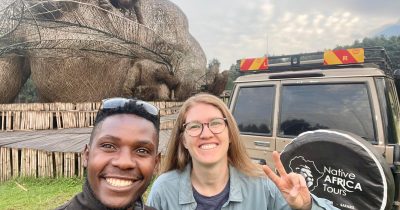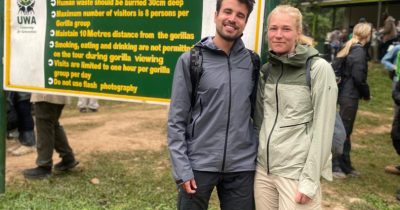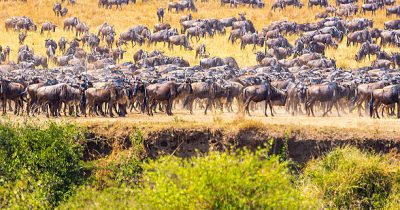A complete guide to the Rwenzori Mountains
The Rwenzori Mountains (Mountains of the Moon), also known as the Rwenzori Mountain range, are a block of mountains with six mountain ranges. They are the third-highest mountains in Africa, following Mount Kenya and Kilimanjaro, respectively.
The Margherita Peak on Mount Stanley is 5109 meters above sea level. It is one of the best peaks hikers enjoy on a Rwenzori hiking tour.
Where is Rwenzori Mountain located?
The Rwenzori Mountains are in western Uganda, a region known for its diverse landscapes and rich biodiversity. The mountains cover the districts of Kasese, Kabarole, Ntoroko, and Bundibugyo and extend into some parts of the Democratic Republic of Congo. This unique location contributes to the varied ecosystems found in the area, from the snowfields and glaciers of the highest peak to the lush forests at lower elevations.
The six major peaks of the Rwenzori Mountains
The six major peaks of the Rwenzori Mountains offer a variety of hiking experiences. Mount Gessi (4715m) is known for its challenging terrain and stunning views, while Mount Baker (4844m) is popular for those seeking a less strenuous hike. Speke (4890m) and Mount Luigi da Savoia (4627m) offer unique landscapes and diverse flora, making them ideal for nature enthusiasts. Mount Emin (4971 m) is an excellent choice for a more remote and adventurous trek.
Margherita Peak (Mount Stanley)
Margherita is on Mt. Stanley, the highest point in Uganda and the Democratic Republic of Congo. It is ranked the third-highest point after the legendary Mount Kilimanjaro in Tanzania. Numerous other peaks surround it.
Mt. Speke
Mt. Speke is the second-highest peak on Mount Rwenzori, rising at an altitude of 4890 meters. Close to Mount Speke is the scenic Mount Stanley.
Mt. Baker
Mount Baker (Kiyanja) is near the Rwenzori Mountains, near the Democratic Republic of Congo border. It rises to 4843 meters and is one of the highest mountain peaks.
Mt. Gessi
Mount Gessi is part of the highest peak on Mount Rwenzori. At 4715 meters, it is Uganda’s fifth-tallest mountain.
Mt. Luingi di Savora
Near Margherita Peak, Mount Luigi di Savora (4627 meters) is Uganda’s sixth-highest mountain peak. On the summit of Mount Luingi di Savora lies a spectacular Sella peak, and it is this mountain range that the Duke of Abruzzi didn’t attempt, but he named it. The Duke of Abruzzi is one of the most famous mountaineers, and during his mountaineering adventure journey, he made his first ascent to Mount St Elias in 1897 and K2 in the Karakoram. During the Rwenzori Mountain hiking expedition, Abruzzi conquered all the Rwenzori peaks. Like most Rwenzori Mountain peaks, Mt. Luigi di Savoia lies on the ridge, with different peaks like Sella, Stairs, and Weismann.
Mount Emin
Rising at an elevation of 4798 meters, Mount Emin features narrow and rocky ridges. It is the fourth mountain range in the Rwenzori Mountains. It is free of snow but has two peaks: Umberto (1574ft) and Kraepelin (15720ft). The two peaks are situated between the Uganda and Congo border. Considering its position, hikers can access it from the Ugandan side or even from the DRC side. As you navigate to the peaks of Mount Emin, expect to pass through the Mugusu Valley, groundsel sheltered steeply, then descend to the path between the two peaks.
The Geology of the Rwenzori Mountains
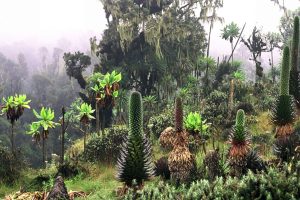
The Rwenzori Mountains, a geological wonder, were formed approximately 3 million years ago. The uplift of black crystalline rocks such as granite, amphibolite, gneiss, and quartzite gave birth to Mount Rwenzori, the world’s highest block mountain. This unique geological event also divided the paleolake Obweruka, forming three now African Great Lakes: Lake Albert, Lake George, and Lake Edward. The Rwenzori Mountain range extends 120 kilometers long and measures about 65 kilometers in width, a testament to the awe-inspiring forces of nature.
The flora on Mount Rwenzori
The Rwenzori Mountains are most popular for their distinct vegetation zones, which vary in zones and elevations. These include alpine meadows, alpine zones, bamboo zones, montane forests, and rock and glacier zones.
The savanna grassland zone (680-1800m)
The savanna grassland zone lies at an elevation range of 680 to 1800m. It features diverse plant species, including shrubs, grasses, and trees. This vegetation zone is dominated by grasses such as Penissetum, Cympopon Ibrism, and Imberata. The shrubs and trees comprise the Combretum and Acacia species.
Afro-montane forest zone (1800 to 2600m)
The afro-montane forest zone is composed of Prunus africana and Podocarpus species. It also features some ferns and grasses.
Bamboo zone (2600-2900m)
At 2600-2900m, there exists a bamboo mixed forest complex. This features species such as sedges, shrubs, herbs, and grasses, and a hike around this belt offers a spectacular view.
Heather zone (3000 – 4000m)
The heather zone grows in poor soil areas. It dominates the top ridges and rocky and boggy ground. The heather zone features red and mauve balsam, disa stairs, impatiens rusorensis, and others. In the valley areas, huge bogs with sedges and Carex rusorensis exist.
The Afro-alpine moorland zones (4000 to 4500m)
As you ascend, the density of the Erica species decreases, and the abundance of the Afro-alpine trees like the lobelia, shrubs, and grass tussocks increases. The 4000-4500m elevation range makes up the pure Afro-alpine region, and plant communities around this zone can be stunning. The Afro-alpine zone comprises plant species like the Tussock of grassland, dendrosenecio woodland, alchemilla shrub, cures bog, and helichrysum shrub.
Rocky or glacier zones (4500 to 5109m)
Lichens and mosses dominate this open zone and can be seen at the highest point of the Rwenzori Mountains.
Climbing the Rwenzori Mountain range
Climbing the Rwenzori Mountain range is the ultimate adventure that awaits every thrill-seeking traveler on the Uganda safari. If you are ready to embark on an unforgettable journey in the Rwenzoris, you have several options. Hiking the Rwenzori Mountains is a challenging yet enriching experience, as it involves following different trails that lead to the six major peaks. These trails include the Central Trail, the Kilembe Trails, and the Bukurungu Trail, each offering a unique adventure and a chance to conquer the Rwenzori Mountains.
The Central circuit
The central trail is the most preferred hiking trail by hikers. It is managed by the locals who live adjacent to the Rwenzori Mountains and Kilembe trails. The central circuit ushers hikers through the scenic route as they conquer the Margherita. Some features on the Rwenzori central circuit include scenic vegetation and great views of Mount Baker, Stanley, and Speke. There are also higher chances of finding some birds and mammals. A complete trek through the Rwenzori Central Circuit trail requires at least 7-9 days. With a 9-day Rwenzori hiking expedition, you can reach the Margherita peaks and return.
Kilembe trail
Are you a passionate hiker and seeking the most challenging trail? You should consider hiking the Kilembe Trail. Rough terrains characterize its landscape and are ideal for experienced hikers/climbers. Its features include rocky areas, pristine surroundings, and boggy areas. Hiking the Kilembe trails takes about 7 to 9 days. The hike usually starts at 1450 meters above sea level. Hiking the Kilembe trails allows travelers to enjoy scenic views of vegetation, physical features, and the surrounding areas.
Bukurungu trail
The Bukurungu trail is a preferred hiking trail for nature enthusiasts. It is most popular for its breathtaking scenery. Trekking through the Bukurungu trail allows you to explore four scenic Lakes, including Bujuku, Bukurungu, Mughuli, and Irene. There are also some rivers, picturesque waterfalls, and lush vegetation. A complete trek along the Bukurungu trail can take about eight days to reach the Margherita peaks. Along the way, hikers can mainly go camping.
Packing list for Rwenzori Mountain hiking safaris
Packing for Rwenzori mountaineering adventures may differ from how you pack for a typical African safari in the savanna park. Considering the nature of the adventure that awaits you in the Rwenzori Mountains, some of the essentials to include on your packing list include trekking poles, two long-sleeved shirts, waterproof pants, hiking socks, a heavy fleece/down jacket, camp shoes, insulated wool gloves, trekking pants, and a rain jacket.
The essentials for trekking include a rucksack to carry the gear, bottled water, trekking poles, crampons, an ice axe, trekking towels, high-energy snacks, headlamps, hiking ropes, a camera with additional batteries plus memory cards, a water filter, a sleeping bag, and a waterproof daypack. The toiletries you may require for Rwenzori Mountaineering include antibiotics, lip balm with sunscreen, sunscreen, face lotion, a portable power bank, a hairbrush, Diamox for altitude sickness, and a toothbrush.
Other essential toiletries include earplugs, wet wipes, anti-chafe balm, toilet paper, ibuprofen for emergencies like stomach upset, feminine hygiene products, and more. Valid visas, passports, credit cards, and other travel documents are essential for your Rwenzori Mountaineering adventure.
Best time to go for Rwenzori Mountaineering
The dry months of the year are the best for visiting the Rwenzori Mountains for hiking/mountaineering adventures. The dry months to mark on your travel calendar as you plan your next mountaineering expedition to the Rwenzori Mountains run from June to August and December to February.
June to August and December to February are the most preferred months of the year, and they guarantee hikers/climbers an exceptional adventure. They experience low or no rainfall, and the different hiking trails to Margherita Peak remain relatively dry, making it easier to hike to the summit. The year’s cold months in the Rwenzori Mountains occur from March to May and September to November. These are the wet or rainy months of the year, and heavy rains are experienced. Hiking to the Rwenzori Mountain range is inconvenient when it sometimes starts raining.
Safety tips to follow during the Rwenzori Mountaineering adventure
Hiking the Rwenzori Mountains requires extra care to avoid encountering dangers during the trek. Check out our top safety tips and travel advice on the Rwenzori Mountaineering adventure.
- First, consider acclimating yourself to the tough altitude. Note that a complete trek through Mount Rwenzori requires you to be fit. You can begin with a gradual hike back to your home country or travel early and engage in exercises in the high-terrain areas of Uganda.
- During the guided trek, observe your guide’s instructions.
- Always be cautious about your surroundings to avoid any chances of encountering hazards.
- During the trek, always consider taking regular breaks to allow your heart to settle or to have maximum rest.
- Know your body’s limits for trekking. Be aware of altitudinal sickness as you ascend to the top of the Rwenzori Mountains range.
- Hire a porter to help you with heavy luggage. With the porter available, you can concentrate on your trek to Margherita with fewer interruptions.
- Stay hydrated at all times. Carry plenty of clean bottled drinking water as you ascend to the summits of the Rwenzori Mountains National Park.
Where to stay on Rwenzori Mountaineering
While on a mountaineering adventure on Mount Rwenzori, expect to retire in any available huts for the night. The trails feature huts where hikers can stop for meals and overnight stays. Nyabitaba hut, John Matte and Guyeoman hut, Bujuku hut, and Kitandara hut are popular accommodation facilities in Mount Rwenzori. The huts to stay in along the Kilembe trail on Rwenzori Mountains include the Bagata camp (4062m), Sine hut (2585m), Butawu (3974m), kalalama hut (3147m), Kiharo camp (3460m) and Margherita camp (4485m).
How much does it cost to hike the Rwenzori Mountains?
The cost of hiking the Rwenzori depends on several factors. These include how long you intend to explore the Rwenzori Mountains, the trail to be hiked, accommodation, time of visit, group size, the tour operator, peaks to be conquered (6 peaks are available on Mount Rwenzori), transportation, etc. The cost of climbing Mount Rwenzori can range from USD 1900 to USD 3000. This amount may include: park entrance fees, accommodation, porters to carry your luggage, and other relevant taxes. Could you talk to a Uganda Travel Expert now for the exact Prices?
The park entry fees for Rwenzori Mountains National Park cost USD 35 per person for foreign nonresidents and USD 25 for residents. Ugandans pay Shs 20,000 as an entry fee to the Rwenzori Mountains National Park. Rwenzori Mountaineering permits can be booked at USD 50 (for foreign nonresidents), USD 40 for foreign residents, and shs. 50,000 for the East African citizens – Ugandans inclusive. Plan and book your Rwenzori Mountaineering expedition with Native Africa Tours and you won’t regret it.

Rwenzori Mountains National Park
Rwenzori Mountains National Park is a UNESCO World Heritage Site in Uganda. It gained this official recognition in 1994. Later, in 2008, the mountain was declared a Ramsar site. This park lies in western Uganda and was officially established as a national park in 1991. Rwenzori Mountains National Park occupies up to 996 sq. km of land area, with over 70% of its location at an elevation range of 2500 meters.
Wildlife in Rwenzori National Park
Up to 70 mammal species, plus 217 bird species, live in the varied habitats of Mount Rwenzori National Park in Kasese district. They include Hyrax, forest elephants, l’hoest monkeys, chimpanzees, Ruwenzori duikers, and black and white colobus monkeys. On the Uganda tour in Rwenzori National Park, other wildlife includes bushbucks, giant forest hogs, Uganda clawed frogs, red duikers, blue monkeys, mongoose, and Rwenzori otters.
Rwenzori National Park is home to about 19 Albertine Rift Valley endemics. The bird checklist to identify on a birding tour in the Rwenzori Mountains National Park includes the slender-billed starling, blue-headed sunbird, illadopsis, lammergeyers, great crested grebe, little grebe, speckled pigeon, scaly spurfowl, Latham’s francolins, Cameron pigeon, Rwenzori turacos, blue-headed coucal, dimeric cuckoo, African emerald cuckoo, and ross’s turacos. Other birds include Levaillant’s cuckoo, barred long-tailed cuckoo, buff-spotted flufftail, African palm swift, cinnamon-chested bee-eaters, handsome francolins, Lagden’s bush shrike, golden-winged sunbird, montane sooty boubou, Rwenzori turacos, and long-eared owl.
What else can you do in Rwenzori Mountains National Park besides mountaineering?
Birding/bird watching.
Bird watching is the other unusual experience you should expect to enjoy on Uganda safaris in the Rwenzori Mountains National Park. A birding tour in the park allows you to spot diverse birds, including several Albertine Rift endemic species.
The birds to identify in this park include the Grauer’s cuckoos, Rwenzori turacos, scarlet tufted malachite sunbird, long-eared owl, montane masked, Rwenzori nightjar, bearded vultures, and mountain buzzard. On bird watching tour in the Rwenzori Mountains National Park, you can also come across birds such as Cassin’s hawk eagle, piping hornbill, crowned hornbill, black and white casqued hornbill, Rwenzori batis, black-throated wattle eye, African shrike flycatchers, chestnut wattle eye, African penduline tit, green crombec, red-faced cisticola, and stout cisticola to mention but a few.
Cultural visit
Cultural/community visits can also be made in the adjacent local communities to Rwenzori Mountains National Park. You can meet the Bakozo people on a cultural visit and deeply explore their unique traditions and cultures. The locals will entertain and teach you hands-on skills, like basket weaving. The other most important highlight of the cultural visit is meeting the blacksmith and the traditional healers.
Guided hikes/nature walks
Visitors with fitness challenges can also explore the wonders of Rwenzori Mountains National Park. The best experience is a guided hike/nature walk around Rwenzori National Park along the trails. The essential nature walking trails that guarantee nature enthusiasts exceptional day-walking experiences include the Mahoma Trail, Ruboni Walk, Bwamba Trail, and Buraro Chimp Forest Trail.
Ruboni village walk: This trail’s guided walk introduces you to Ruboni village, a local community of about 2000 people. The town is comprised mainly of Bakonzo people, the popular mountain keepers.
The Buraco chimp forest: A hike through the Buraco chimp forest allows you to explore different species, including birds, animals, and trees.
What are the Rwenzori Mountains famous for?
The Rwenzori Mountains are typically block mountain ranges. They are most popular for their distinct alpine floral species, especially the Albertine rift endemic species, which range in varying elevations. The most famous floral species in the Rwenzori Mountains comprise giant heathers, lobelias, and groundsels.
Why are the Rwenzori Mountains referred to as the Mountains of the Moon?
Mount Rwenzori is a popular block mountain in Africa. It is believed to be the source of the River Nile. The term “Mountains of the Moon” was derived from a Greek merchant, Diogenes, who visited East Africa and claimed to have found the Source of the Nile. The natives, on the other hand, described these block mountain ranges as the Mountains of the Moon thanks to their snow-capped peaks. When James Grant and John Speke visited the Rwenzori Mountains around 1862, they found the Rwenzori Mountain summits blanketed in white, thus fitting into Diogenes’ description. On the summits of these block mountain ranges, many upper streams feed several of the Rwenzori Mountains rivers.
In conclusion, now that you have learned about the Rwenzori Mountains, book your hiking tour and create a signature of memories.
